From Manual to Smart: Pallet Inverters Transforming Indonesia's Material Handling
Are you struggling with the slow, risky, and costly process of manually handling palletized goods? In a rapidly industrializing economy like Indonesia, these inefficiencies can be a major roadblock to growth. Every damaged product eats into your profit margin, every minute of downtime hurts your production schedule, and every workplace injury is a serious liability. You know there has to be a better way to manage your loads, but the path from manual labor to smart automation can seem complex.
Pallet inverters are transforming material handling in Indonesia by automating the process of rotating, transferring, or replacing pallets. This shift from manual labor to smart machinery significantly boosts efficiency, enhances worker safety, and reduces product damage. This allows businesses to scale operations effectively in the region's dynamic economy.
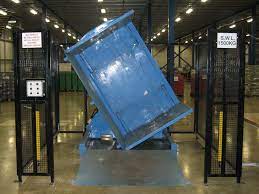
I've spent my entire career on the factory floor, first as an engineer and later as a factory owner. I understand the pressure to keep costs down while pushing productivity up. It’s a constant balancing act. The move from manual processes to automated solutions is not just about buying a new piece of equipment. It is a strategic decision that impacts your entire operation, from your balance sheet to your team's morale. Let's explore how this transformation really works and what it means for a business leader like you.
How do pallet inverters actually reduce operational costs?
As a business owner, you are constantly watching the numbers. Labor costs, product damage, and operational slowdowns are not just entries on a spreadsheet; they are real drains on your profitability. You might see a team of two or three workers spending precious minutes manually re-stacking a pallet. You know this process is slow and carries the risk of injury or product damage. These "small" costs add up, bleeding your business day after day. A pallet inverter offers a direct and effective way to stop this bleeding and turn those expenses into savings.
A pallet inverter reduces operational costs by minimizing manual labor, speeding up the pallet exchange process, and drastically cutting down on product damage during handling. This results in lower payroll expenses for manual handling tasks, increased throughput for your entire line, and a significant reduction in write-offs for unsellable goods.
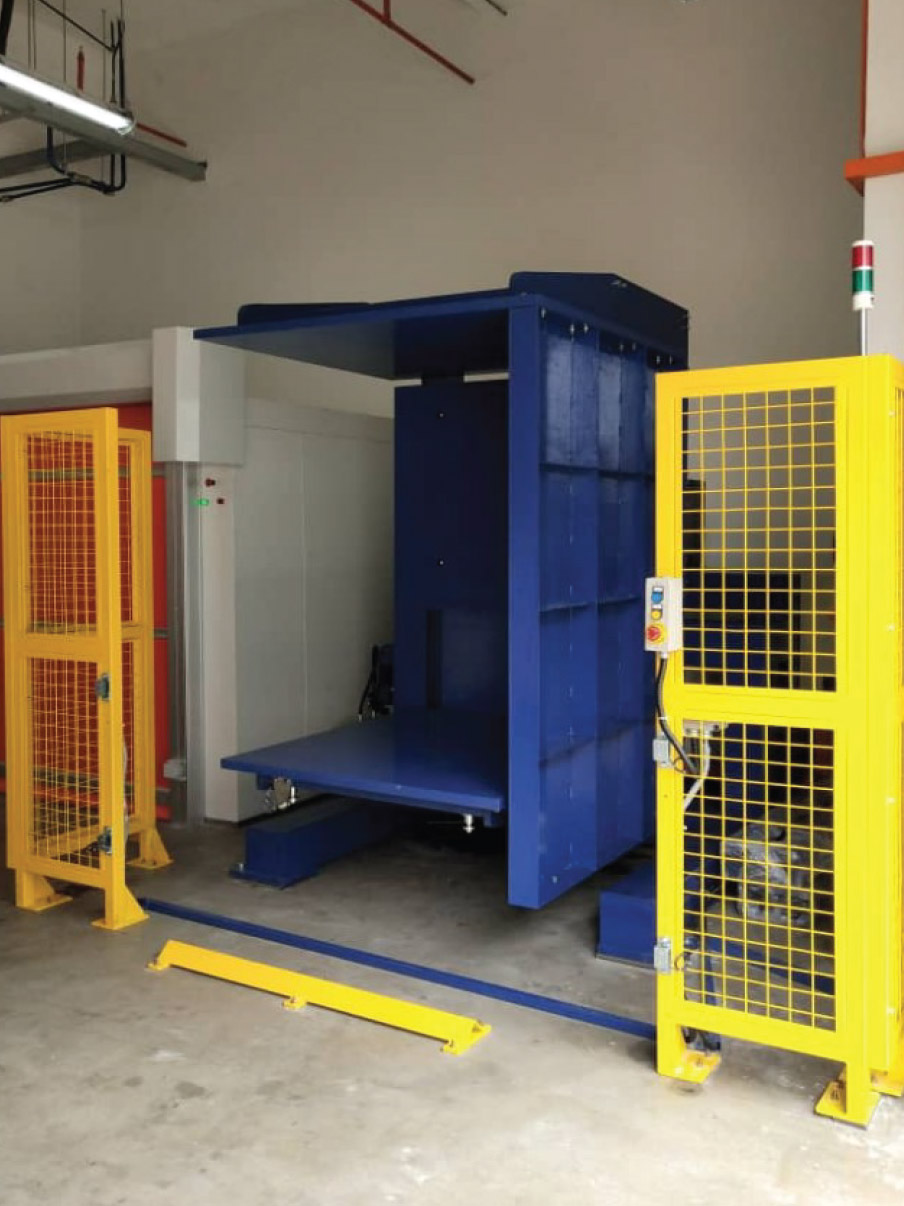
The Real Cost of Manual Handling
Many factory managers I speak with underestimate the true cost of manual pallet handling. They see the hourly wage of the workers, but they often miss the bigger picture. The real cost is a combination of direct and indirect expenses that can have a huge impact on your bottom line. A pallet inverter tackles these costs head-on.
Breaking Down the Savings
The financial benefits come from several key areas. First is the direct reduction in labor. A task that might take two workers 15-20 minutes can be done by one operator with a pallet inverter in under two minutes. This isn't about replacing people; it's about reallocating your skilled workforce to more valuable, less strenuous tasks. Second is the dramatic reduction in product damage. The gentle, controlled clamping and rotation of a machine is far more reliable than human hands, especially with heavy or unstable loads. This means fewer goods are crushed, dropped, or contaminated. Lastly, there's the ripple effect on overall efficiency. When pallet exchange is fast, forklifts are not left waiting, loading docks are cleared quicker, and the entire flow of goods through your facility speeds up.
Here is a simple comparison that illustrates the point:
| Metric | Manual Handling (2 Workers) | Pallet Inverter (1 Operator) | Impact |
|---|---|---|---|
| Time per Pallet | 15-20 minutes | < 2 minutes | >85% Time Reduction |
| Labor Required | 2 Workers | 1 Operator | 50% Labor Reduction |
| Product Damage Risk | High | Very Low | Reduced write-offs, improved quality |
| Injury Risk | High (Back, Strain) | Very Low | Lower insurance/compensation costs |
| Operational Flow | Creates Bottlenecks | Streamlines Process | Increased overall throughput |
This isn't just theory. I have seen clients in demanding industries like steel and chemicals implement these machines and watch their operational costs drop. The savings on labor and damaged goods alone often provide a return on investment that is much faster than they initially expected.
What makes a pallet inverter "smart" in today's digital factories?
You have likely invested heavily in making your factory "smarter." You may have an MES to track production or a WMS to manage inventory. But often, the physical material handling is a "black box." It's a manual process that doesn't feed data into your systems. This creates a disconnect. Your digital strategy is only as strong as its weakest link, and a non-integrated, manual process is a very weak link. It prevents you from having true visibility and control over your operations.
A pallet inverter becomes "smart" when it integrates with a factory's digital infrastructure through features like PLC controls, IoT sensors, and data connectivity. This allows for automated operation, real-time monitoring, predictive maintenance alerts, and seamless communication with MES and WMS systems, turning it into an active data point in a smart factory.
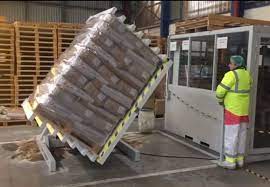
Moving Beyond Mechanical Operation
In my early days as an engineer, a pallet inverter was a purely mechanical workhorse. It was strong and reliable, but it was also an island. It did its job, but it didn't talk to anything else. Today, that has completely changed. A smart pallet inverter is a node in your factory's network. It's a source of valuable data that can help you make better decisions.
Key Features of a Smart Inverter
The intelligence of a modern pallet inverter comes from its ability to sense, process, and communicate. This is achieved through several key technologies. Programmable Logic Controllers (PLCs) are the brain, allowing for complex, automated sequences. They can be programmed to handle different load sizes, weights, and types without manual adjustment. IoT sensors are the senses. They monitor everything from clamping pressure to motor temperature and cycle count. This data is critical. For example, a sensor might detect that a motor is running slightly hotter than usual, triggering a maintenance alert long before a failure occurs. This is the core of predictive maintenance, a key goal for any owner worried about aging equipment.
The real power is unlocked when this machine is connected to your larger factory systems.
| Feature | "Dumb" Pallet Inverter | "Smart" Pallet Inverter | Benefit for a CEO |
|---|---|---|---|
| Control | Manual Buttons | PLC-Controlled, Integrated with MES/WMS | Full automation, reduced human error, production tracking. |
| Data | None | Real-time data on cycles, faults, pressure. | Enables predictive maintenance, meets 95% uptime goal. |
| Integration | Standalone Machine | Part of automated lines (with AGVs, conveyors) | Increases overall line efficiency and throughput. |
| Feedback | Visual check by operator | Sends completion signals to WMS | Accurate, real-time inventory and process visibility. |
This integration turns a simple material handling task into a fully visible, measurable, and optimizable part of your production process. It directly supports the goal of a digital transformation, providing the data needed for the kind of big-picture analysis that drives down costs and increases efficiency.
How can pallet inverters improve safety and comply with regulations in a place like Indonesia?
Worker safety is not just a regulatory requirement; it's a moral one. In any heavy industry, and especially in a growing industrial hub like Indonesia, keeping your people safe is priority one. The government is also enforcing stricter occupational health and safety (OHS) standards. A single serious accident can result in devastating consequences: production halts, significant fines, legal action, and irreparable damage to your company's reputation. Manual handling of heavy pallet loads is consistently one of the biggest sources of workplace injuries.
Pallet inverters fundamentally improve safety by eliminating the need for manual lifting and re-stacking of heavy loads, which is a leading cause of musculoskeletal injuries. They are engineered with multiple safety features like light curtains, safety cages, and dual-action controls. These features ensure they operate within designated safe zones, helping companies in Indonesia and elsewhere comply with and exceed local and international OHS standards.
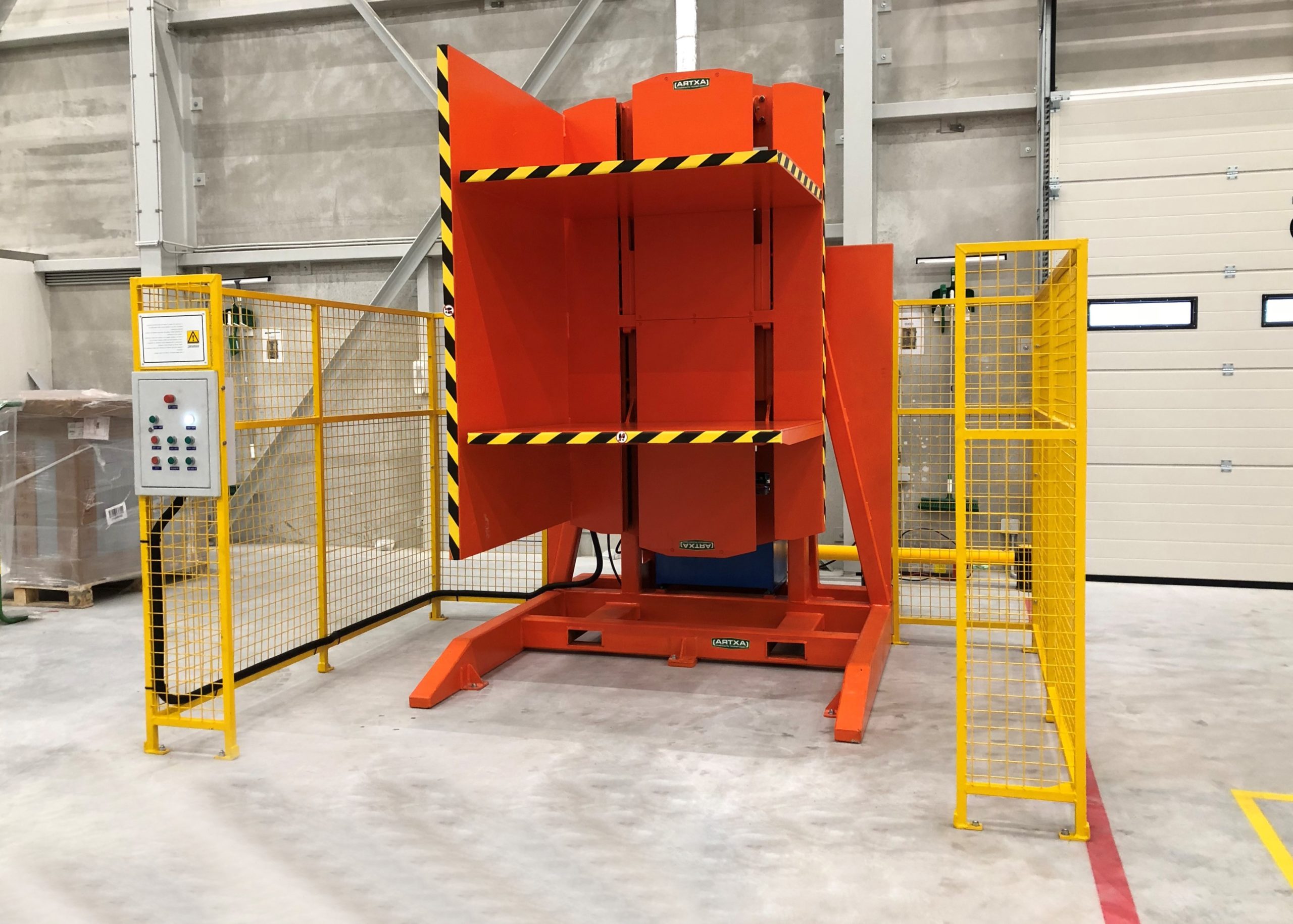
Designing Danger Out of the Process
From my experience designing and building these machines, safety is not an add-on; it's part of the core design. The primary safety benefit is simple: the machine does the dangerous work. It takes on the heavy lifting, bending, and twisting that leads to chronic back pain and acute injuries. This is the most effective way to mitigate risk—by removing the hazard completely.
Engineered Safety Systems
Beyond this fundamental benefit, modern pallet inverters are equipped with layers of active safety technology. You cannot just walk up to the machine while it's operating.
- Safety Cages: A physical barrier prevents personnel from entering the operational area during a cycle.
- Light Curtains: These create an invisible barrier of infrared light. If a person or object breaks the beam, the machine stops instantly. This is crucial for semi-automated setups where a forklift might place a pallet.
- Dual-Button Controls: The operator must use both hands to start a cycle, ensuring their hands are clear of any moving parts.
- Emergency Stops: Prominently placed E-stop buttons can halt all motion immediately in case of an unforeseen issue.
These systems work together to create a safe operating environment. When I talk with clients, I emphasize that choosing a machine with internationally recognized safety certifications (like CE marking) is a smart move. It provides a clear signal to local regulators in places like Indonesia that you are serious about safety and are using equipment that meets a global standard of care. This simplifies compliance and demonstrates due diligence.
The Human Impact
Reducing injuries has a powerful effect on your workforce. It improves morale because employees see that you are investing in their well-being. It reduces absenteeism and lowers the costs associated with worker compensation claims. A safer workplace is a more productive and stable workplace.
What is the real ROI of investing in a pallet inverter over manual methods?
As a business owner who has built a factory from the ground up, I know that every investment must be justified. A pallet inverter is a significant capital expenditure, and you need to be certain it will pay for itself. It is easy to see the upfront cost on a quote, but it can feel harder to quantify all the long-term financial benefits. This can lead to hesitation, causing you to stick with the familiar, high costs of manual labor because they are predictable.
The real ROI of a pallet inverter comes from a clear calculation comparing its total cost of ownership against the combined savings from reduced labor, eliminated product damage, increased throughput, and lower safety-related costs. For most high-volume operations, like those common in Indonesia's manufacturing sector, a full return on investment is typically seen in 12 to 24 months.
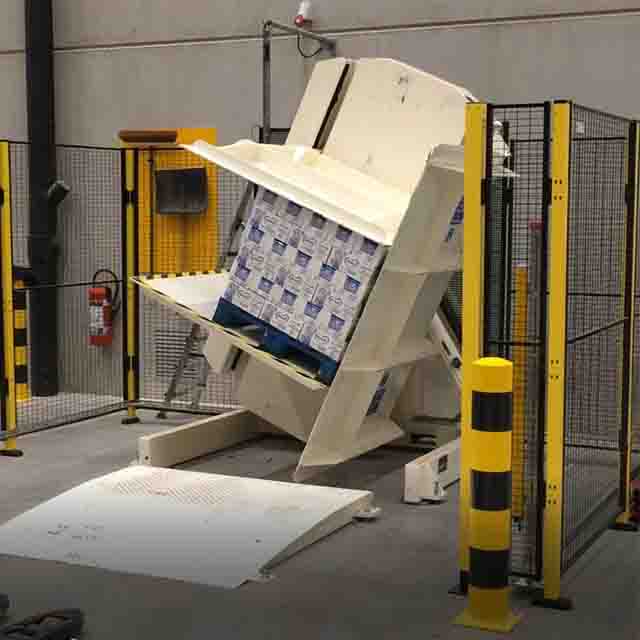
Building Your ROI Calculation
The formula for ROI is simple: (Total Gains - Investment Cost) / Investment Cost. The key is to be thorough in identifying all the gains, both tangible and intangible.
Tangible Gains: The Hard Numbers
These are the direct, measurable savings that you can track on your financial statements.
- Labor Savings: This is the most obvious gain. Calculate the hourly cost (wage + benefits) of the workers currently performing the task. Multiply that by the number of hours saved per day, per week, and per year.
- Reduced Product Damage: Analyze your records. What is the average value of goods damaged or written off per month due to manual handling errors? A pallet inverter can reduce this number by over 95%. This is direct profit added back to your bottom line.
- Increased Throughput: How many more pallets can you process per hour? What is the value of that increased capacity? If you can load trucks faster or feed your production line more efficiently, that translates to more revenue.
I once worked with a client in the steel wire industry, an operation very similar to what Javier Morales runs. They were handling heavy, valuable coils and their manual process was a huge bottleneck and safety risk. We sat down and built an ROI model together. By factoring in labor, damage, and the cost of production downtime, we calculated their payback period at just under 18 months. Two years later, the plant manager told me it was one of the best investments they had ever made, not just for the money, but for the "headaches it eliminated."
Intangible Gains: The Hidden Value
There are other benefits that are harder to assign a specific dollar value to but are incredibly important.
- Improved Worker Safety & Morale: A safer team is a happier, more stable team.
- Enhanced Reputation: Being known as a modern, safe, and efficient operation helps attract talent and customers.
- Operational Flexibility: Quickly swapping to different pallet types (e.g., from in-house wood to plastic export pallets) becomes a simple, fast task.
When you combine the hard numbers with these powerful, long-term benefits, the investment in a pallet inverter becomes one of the clearest and most compelling business cases a factory owner can make.
My Insights
When I was starting my own factory, I faced many of the same challenges that someone like Javier faces today. Every decision was critical. Every dollar invested had to count. I learned a vital lesson back then: investing in the right equipment is not a cost. It is the foundation for growth and stability. Sticking with outdated, manual processes because they feel familiar is one of the most expensive decisions a business can make. It’s a slow bleed of inefficiency, risk, and lost opportunity.
A pallet inverter is a perfect example of this principle. On the surface, it’s a machine that flips things over. But strategically, it is so much more. It is a step towards a more resilient, more efficient, and fundamentally safer operation. It’s a tool that helps you control costs in the face of volatile energy prices and empowers you to meet rising demand without simply hiring more people for a dangerous job.
For a leader who has built a company from the ground up, this kind of strategic investment is what separates a good business from a great one. It’s not about replacing people. It is about empowering your team by removing the most strenuous and least valuable tasks from their workload, freeing them to focus on quality, control, and improvement. This is the core philosophy we build into every solution at SHJLPACK. My goal now is to share what I've learned on my journey, to be the kind of partner I wish I had when I was facing those tough decisions. The right technology, applied with a clear strategy, can truly transform a business.
Conclusion
Ultimately, adopting smart pallet inverters is a strategic move for operational excellence, safety, and future-proofing your business in a competitive market.



